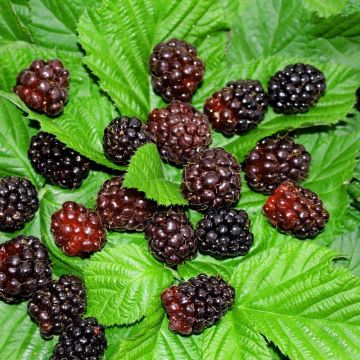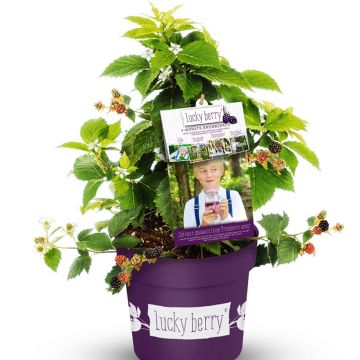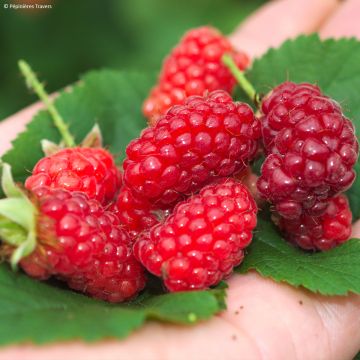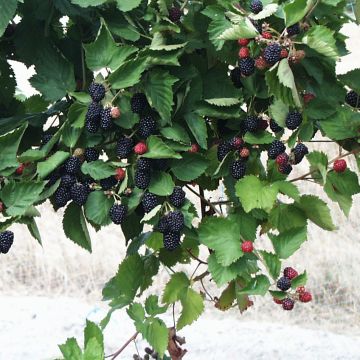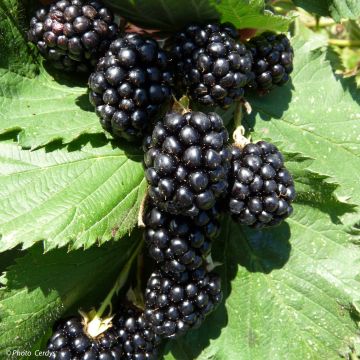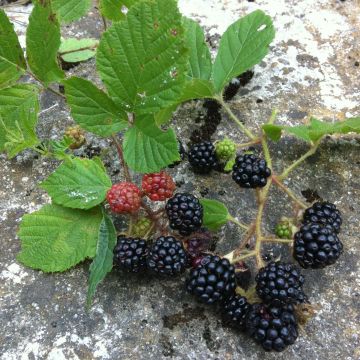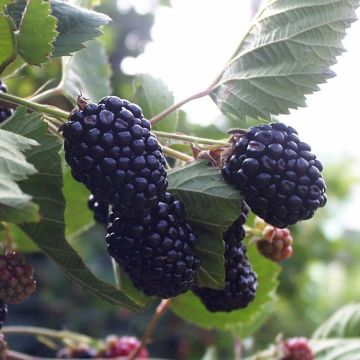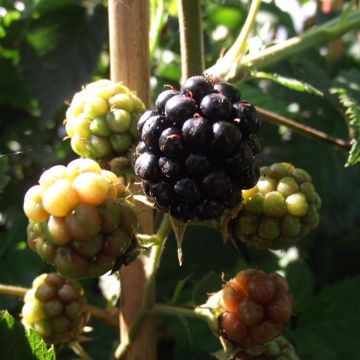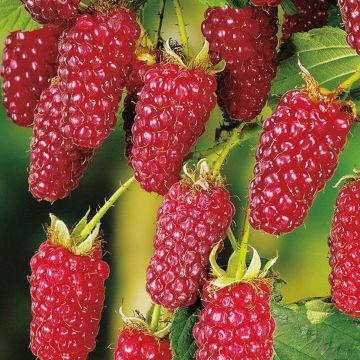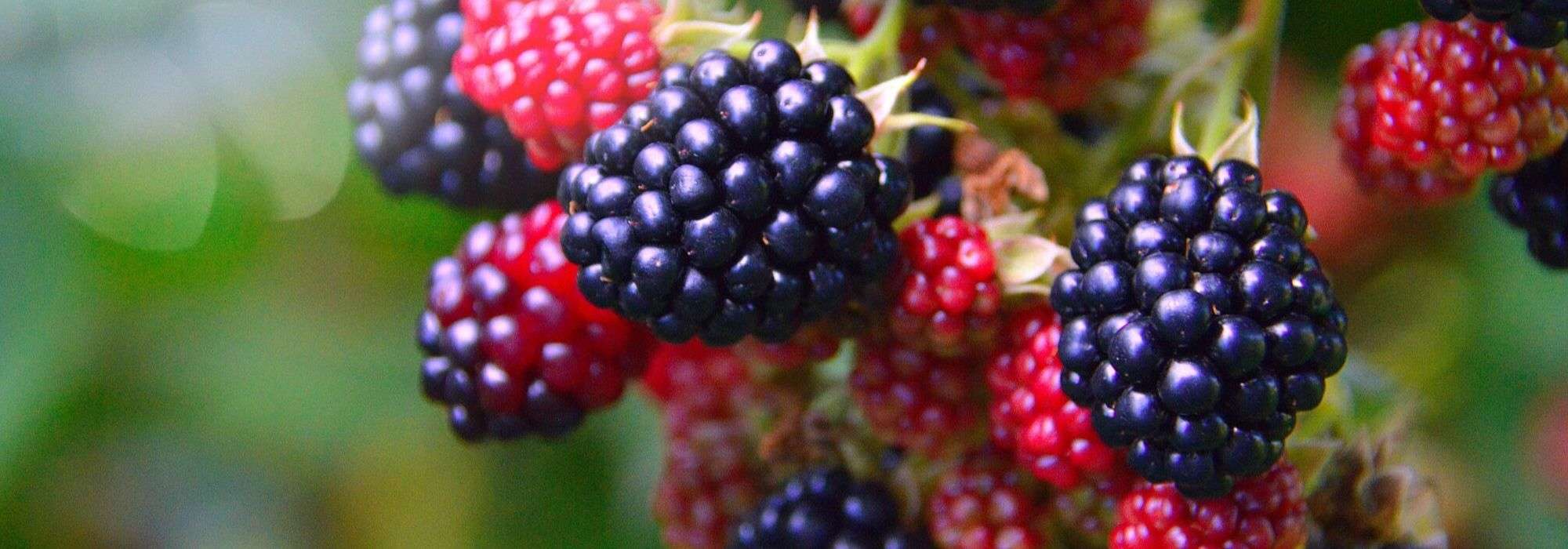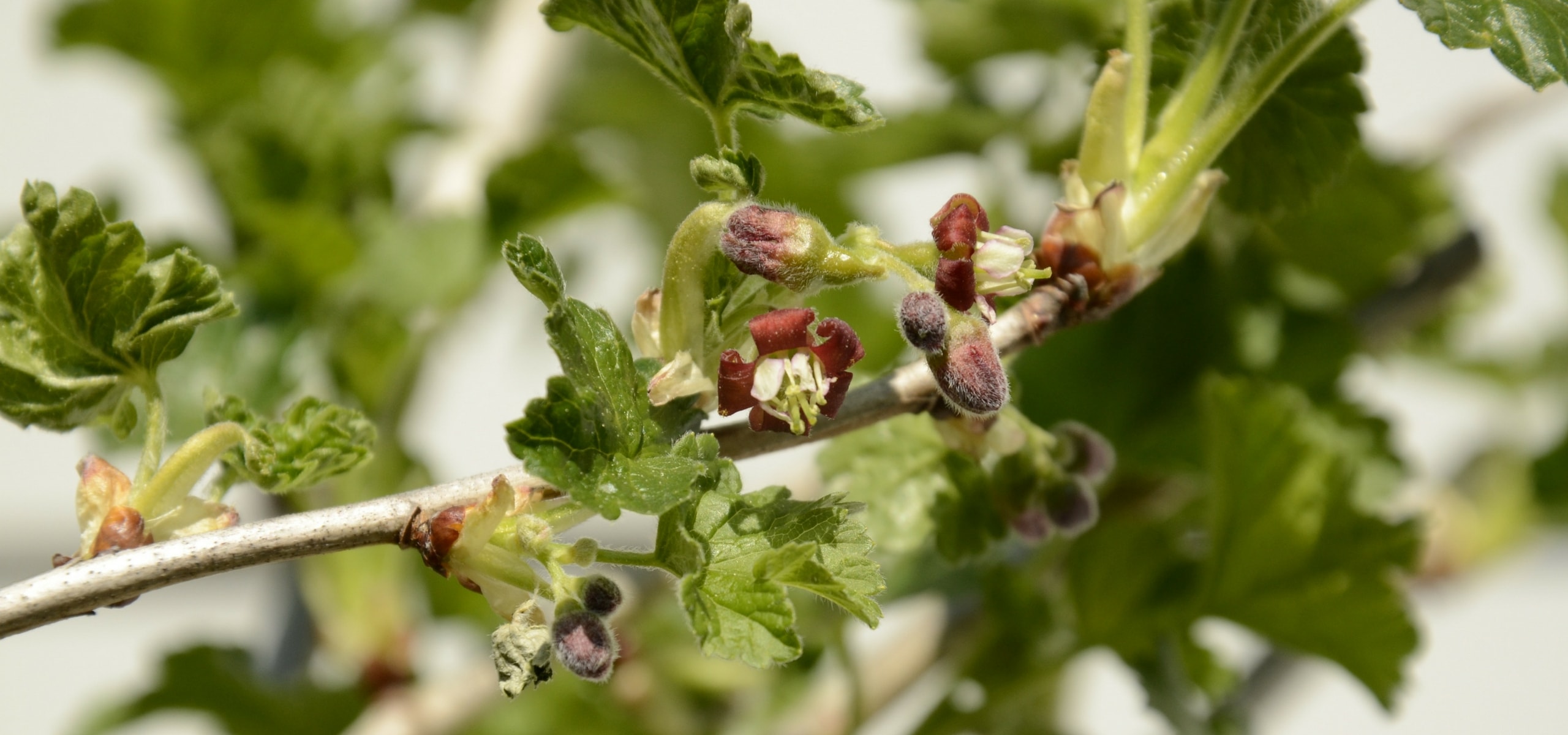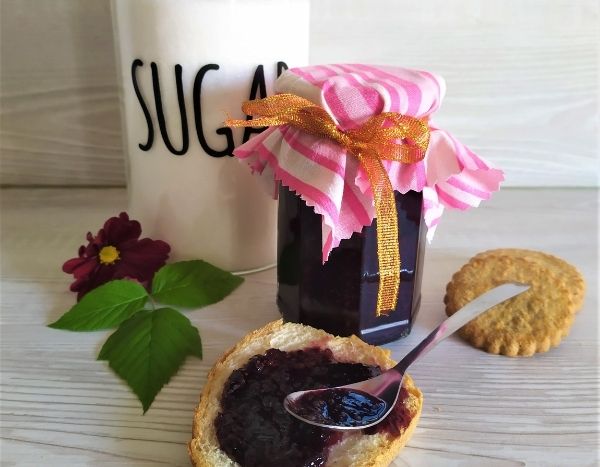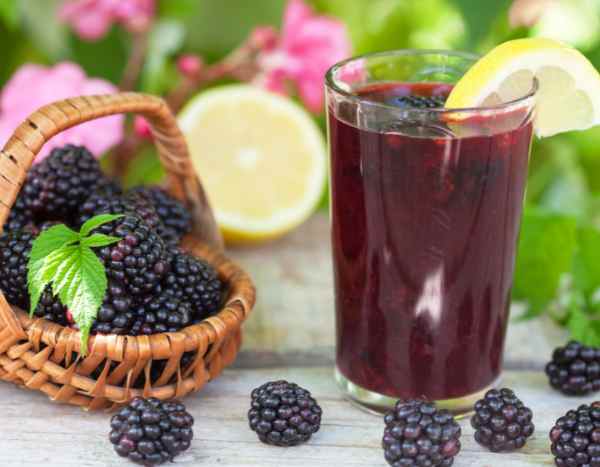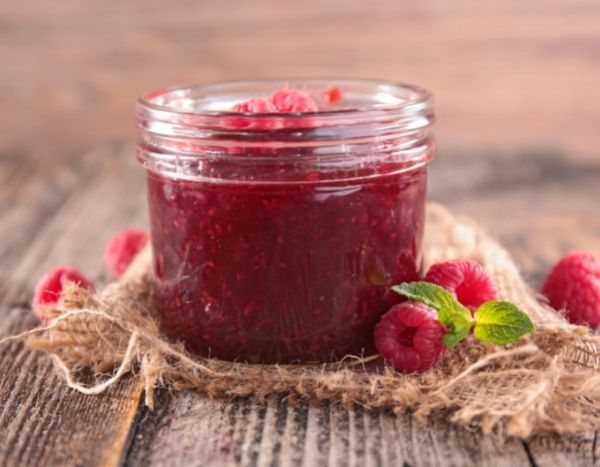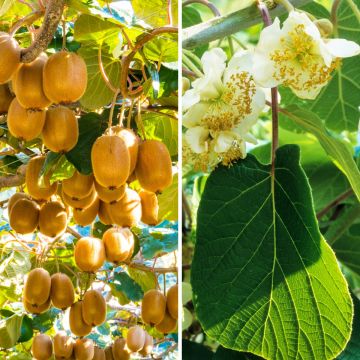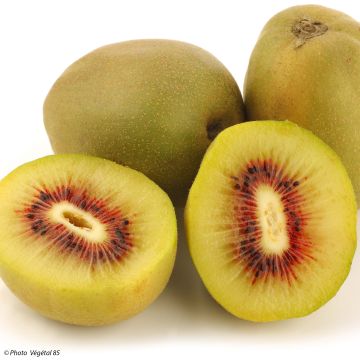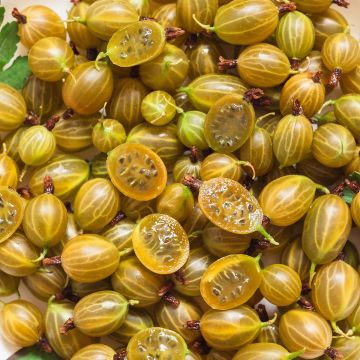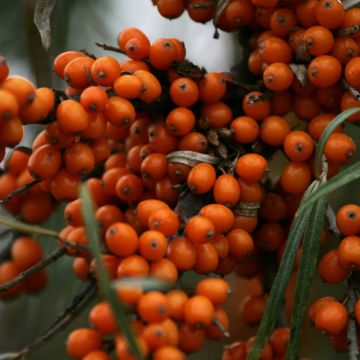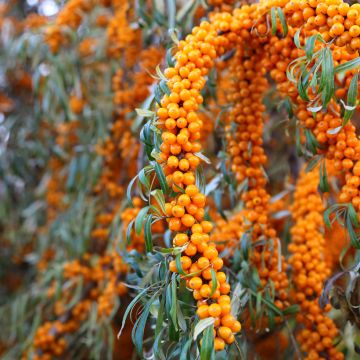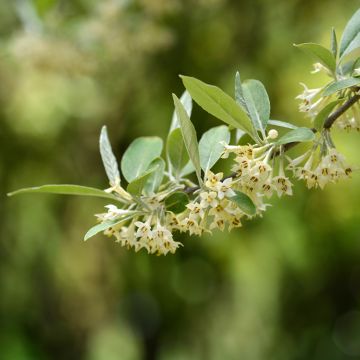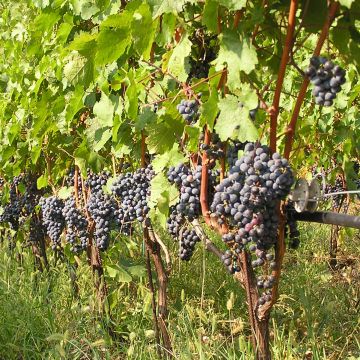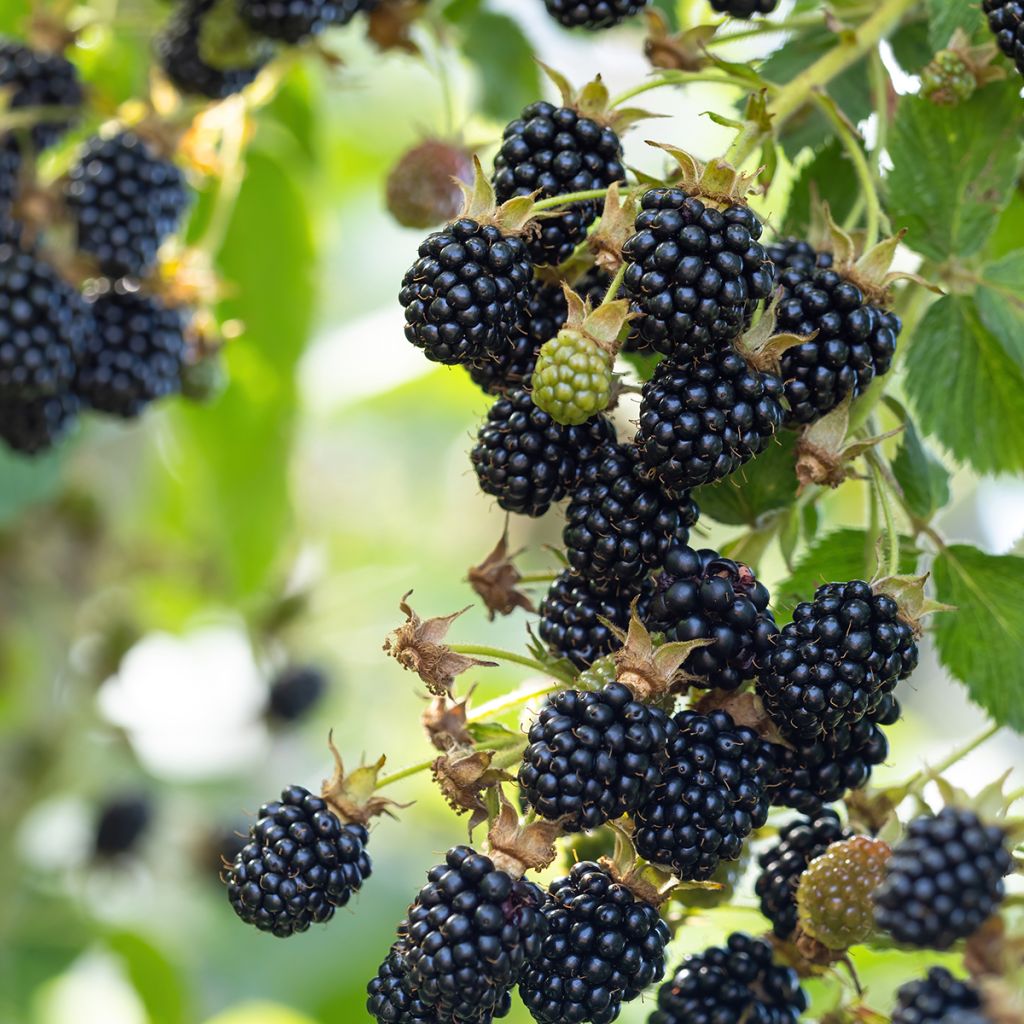

Rubus fruticosus 'Loch Maree'
Rubus fruticosus 'Loch Maree'
Rubus fruticosus Loch Maree
European blackberry, bramble, blackberry
Special offer!
Receive a €20 voucher for any order over €90 (excluding delivery costs, credit notes, and plastic-free options)!
1- Add your favorite plants to your cart.
2- Once you have reached €90, confirm your order (you can even choose the delivery date!).
3- As soon as your order is shipped, you will receive an email containing your voucher code, valid for 3 months (90 days).
Your voucher is unique and can only be used once, for any order with a minimum value of €20, excluding delivery costs.
Can be combined with other current offers, non-divisible and non-refundable.
Why not try an alternative variety in stock?
View all →This plant carries a 6 months recovery warranty
More information
We guarantee the quality of our plants for a full growing cycle, and will replace at our expense any plant that fails to recover under normal climatic and planting conditions.
Description
The Rubus fruticosus 'Loch Maree' is a variety of self-fertile garden blackberry that offers an incredibly decorative pink flowering and deliciously sweet and fruity fruits. Robust and vigorous, this plant forms an upright clump just over 2m (7ft) tall. Its thornless branches make picking easier. Numerous clusters of beautiful semi-double pink flowers cover the plant from May to July. From mid-July to late August, it produces plenty of medium-sized berries, weighing about 8 grams, juicy, sweet, with a hint of acidity. With a fruity and aromatic flavour, this blackish-purple fruit, enriched with its colours and fragrance, enhances coulis, jellies, jams, pies, and fruit salads.
Planting is done in autumn but preferably in spring for regions with cold or wet winters. Despite a slightly lower hardiness (-15 °C (5°F)) than other blackberry varieties, 'Loch Maree' is easy to grow and disease-resistant. The early ripening of this variety can also yield good results in partially shaded areas.
Rubus belongs to the rose family, originating from the mountains of the Caucasus in Asia Minor. This genus has diversified over time, giving rise to several subgenera, including raspberry (Rubus idaeus) and common blackberry (Rubus fruticosus). This latter genus includes numerous subspecies differing in fruit size, colour, and acidity. This berry has been consumed in Europe and America for about 2000 years. Rubus fruticosus is commonly known as the bramble or wild blackberry. It is a woody climbing liana that can reach a width of 5m (16ft) or more, with stems usually armed with thorns. It is found in many temperate regions worldwide, where it is often considered an invasive plant.
The 'Loch Maree' blackberry is an English garden blackberry originating from a blackberry selection program at the James Hutton Institute, a scientific research institute in Scotland. The objective was to create new blackberry varieties well adapted to the cold and wet weather of the British Isles. This new cultivar has an upright habit, is thornless, and has early fruit ripening. The plant reaches 2 to 3m (7 to 10ft) in height, with erect branches stemming from a stump that can occupy 0.5 to 0.8m (2 to 3ft) of ground space. The foliage is deciduous, falling in autumn. It is bright green and composed of small, toothed, compound leaves with visible veins similar to raspberry leaves. The stems only live to bear fruit (2 years) and are gradually replaced by shoots from the stump. Flowering and fruiting generally occur on 2-year-old branches, so renewing them yearly through winter pruning is essential. From May to June, the abundant and melliferous flowering consists of numerous pale pink, semi-double flowers in 2-3cm (1in) diameter cups grouped in clusters. The resulting fruits are composed of drupes clustered on the receptacle, adherent. They are of medium size, larger than wild blackberries, turning red and shiny black when ripe. They should be picked when entirely black, as they become sweet, tangy, juicy, and flavorful.
The 'Loch Maree' blackberries ripen from mid-July, and the harvests continue until the end of August. They are delicate fruits that need to be carefully picked when perfectly ripe. Thanks to the thornless branches, picking becomes more enjoyable. They can be lightly washed with water. Blackberries keep better in the refrigerator and can be frozen. They are delightful to eat fresh right after picking. Still, they can also be used for many culinary purposes: jellies, jams, sorbets, coulis, syrups, juices, tiramisu, crumbles, puddings... not to mention the famous blackberry pies. Low in calories but rich in minerals (manganese, iron, potassium), vitamins C and K, fibre, and antioxidants, blackberries contribute to a balanced diet.
Hardy to -15 °C (5°F) and easy to grow, the 'Loch Maree' blackberry is content with ordinary soil, although it prefers fertile, well-drained, and fresh soil. A sunny or slightly shaded exposure is preferable. It is quite vigorous and produces numerous lateral shoots from the stump. 'Self-fertile, 'Loch Maree' can ensure its pollination, but other blackberry varieties nearby will optimise cross-pollination, thereby increasing fruiting while diversifying the harvest. Good mulching helps limit evaporation and preserves soil fauna.
Rubus fruticosus 'Loch Maree' in pictures
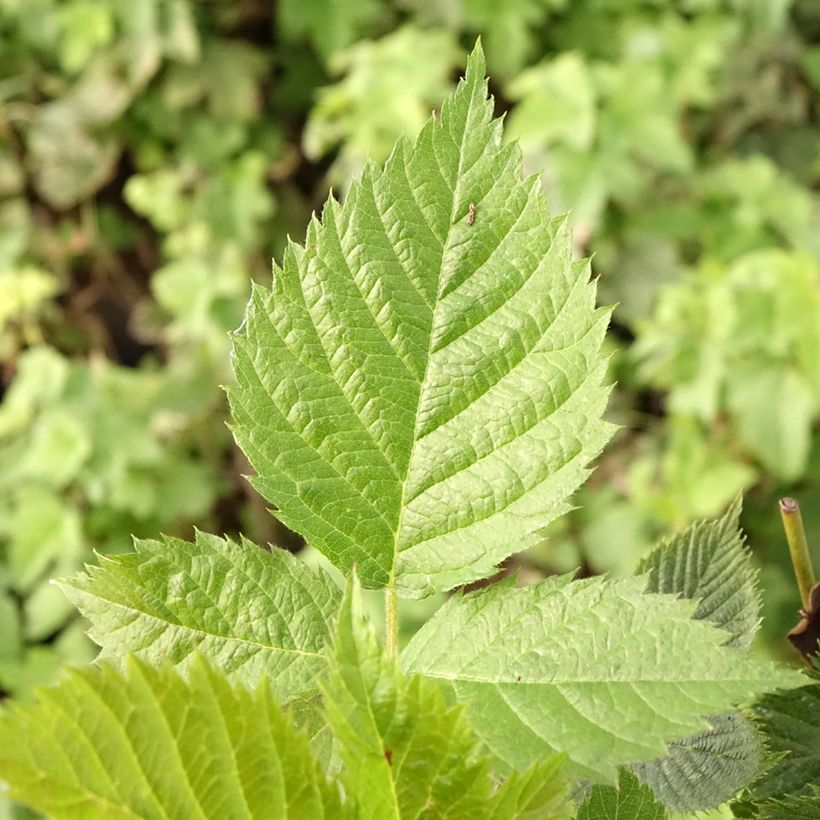

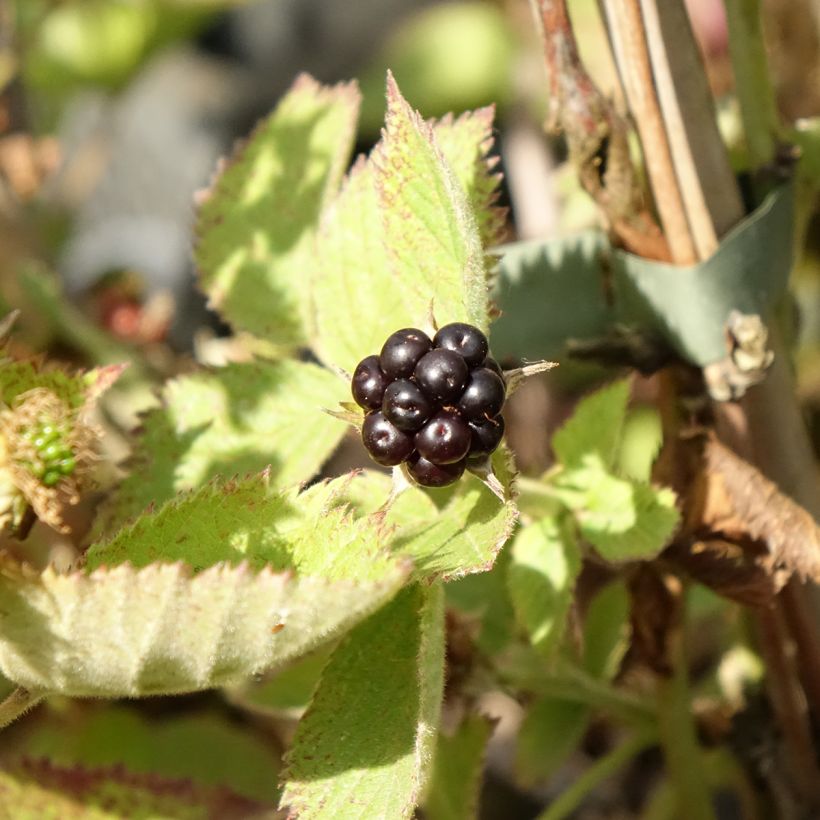

Plant habit
Fruit
Flowering
Foliage
Botanical data
Rubus
fruticosus
Loch Maree
Rosaceae
European blackberry, bramble, blackberry
Cultivar or hybrid
Planting and care
The 'Loch Maree' Blackberry prefers deep, fertile, moist soils, but it is a low-maintenance plant that will adapt to any ordinary soil, as long as it is not too dry in summer. This bush bears fruit in the sun, partial or even shade, but the fruits will be of lower quality in those conditions. In the north of the Loire region, it will tolerate full sun, while in the south, it will prefer partial shade. It is best to plant it in the garden in autumn, from September to December.
Dig a hole twice as large as the root system. Loosen the root ball with a slightly sharp tool to untangle the roots and promote growth. Place the bush in the hole without burying it too deep. Water well to compact the soil and remove air around the roots. Ensure the plant does not lack water in the first year after planting.
Water regularly to facilitate root establishment in the first year of planting. During periods of high heat or prolonged drought, provide additional water. Weed the surface especially at the beginning of planting, and mulch to retain moisture in summer.
Similarly, in the first year, only keep the vigorous stems. Organic fertiliser at the start of vegetation is beneficial. Train the new stems as they grow to prevent overgrowth: the blackberry naturally layers, meaning that if a branch touches the ground for a prolonged period, it will develop roots and new stems, creating a new young plant.
Planting period
Intended location
Care
Planting & care advice
This item has not been reviewed yet - be the first to leave a review about it.
Similar products
Haven't found what you were looking for?
Hardiness is the lowest winter temperature a plant can endure without suffering serious damage or even dying. However, hardiness is affected by location (a sheltered area, such as a patio), protection (winter cover) and soil type (hardiness is improved by well-drained soil).

Photo Sharing Terms & Conditions
In order to encourage gardeners to interact and share their experiences, Promesse de fleurs offers various media enabling content to be uploaded onto its Site - in particular via the ‘Photo sharing’ module.
The User agrees to refrain from:
- Posting any content that is illegal, prejudicial, insulting, racist, inciteful to hatred, revisionist, contrary to public decency, that infringes on privacy or on the privacy rights of third parties, in particular the publicity rights of persons and goods, intellectual property rights, or the right to privacy.
- Submitting content on behalf of a third party;
- Impersonate the identity of a third party and/or publish any personal information about a third party;
In general, the User undertakes to refrain from any unethical behaviour.
All Content (in particular text, comments, files, images, photos, videos, creative works, etc.), which may be subject to property or intellectual property rights, image or other private rights, shall remain the property of the User, subject to the limited rights granted by the terms of the licence granted by Promesse de fleurs as stated below. Users are at liberty to publish or not to publish such Content on the Site, notably via the ‘Photo Sharing’ facility, and accept that this Content shall be made public and freely accessible, notably on the Internet.
Users further acknowledge, undertake to have ,and guarantee that they hold all necessary rights and permissions to publish such material on the Site, in particular with regard to the legislation in force pertaining to any privacy, property, intellectual property, image, or contractual rights, or rights of any other nature. By publishing such Content on the Site, Users acknowledge accepting full liability as publishers of the Content within the meaning of the law, and grant Promesse de fleurs, free of charge, an inclusive, worldwide licence for the said Content for the entire duration of its publication, including all reproduction, representation, up/downloading, displaying, performing, transmission, and storage rights.
Users also grant permission for their name to be linked to the Content and accept that this link may not always be made available.
By engaging in posting material, Users consent to their Content becoming automatically accessible on the Internet, in particular on other sites and/or blogs and/or web pages of the Promesse de fleurs site, including in particular social pages and the Promesse de fleurs catalogue.
Users may secure the removal of entrusted content free of charge by issuing a simple request via our contact form.
The flowering period indicated on our website applies to countries and regions located in USDA zone 8 (France, the United Kingdom, Ireland, the Netherlands, etc.)
It will vary according to where you live:
- In zones 9 to 10 (Italy, Spain, Greece, etc.), flowering will occur about 2 to 4 weeks earlier.
- In zones 6 to 7 (Germany, Poland, Slovenia, and lower mountainous regions), flowering will be delayed by 2 to 3 weeks.
- In zone 5 (Central Europe, Scandinavia), blooming will be delayed by 3 to 5 weeks.
In temperate climates, pruning of spring-flowering shrubs (forsythia, spireas, etc.) should be done just after flowering.
Pruning of summer-flowering shrubs (Indian Lilac, Perovskia, etc.) can be done in winter or spring.
In cold regions as well as with frost-sensitive plants, avoid pruning too early when severe frosts may still occur.
The planting period indicated on our website applies to countries and regions located in USDA zone 8 (France, United Kingdom, Ireland, Netherlands).
It will vary according to where you live:
- In Mediterranean zones (Marseille, Madrid, Milan, etc.), autumn and winter are the best planting periods.
- In continental zones (Strasbourg, Munich, Vienna, etc.), delay planting by 2 to 3 weeks in spring and bring it forward by 2 to 4 weeks in autumn.
- In mountainous regions (the Alps, Pyrenees, Carpathians, etc.), it is best to plant in late spring (May-June) or late summer (August-September).
The harvesting period indicated on our website applies to countries and regions in USDA zone 8 (France, England, Ireland, the Netherlands).
In colder areas (Scandinavia, Poland, Austria...) fruit and vegetable harvests are likely to be delayed by 3-4 weeks.
In warmer areas (Italy, Spain, Greece, etc.), harvesting will probably take place earlier, depending on weather conditions.
The sowing periods indicated on our website apply to countries and regions within USDA Zone 8 (France, UK, Ireland, Netherlands).
In colder areas (Scandinavia, Poland, Austria...), delay any outdoor sowing by 3-4 weeks, or sow under glass.
In warmer climes (Italy, Spain, Greece, etc.), bring outdoor sowing forward by a few weeks.






























